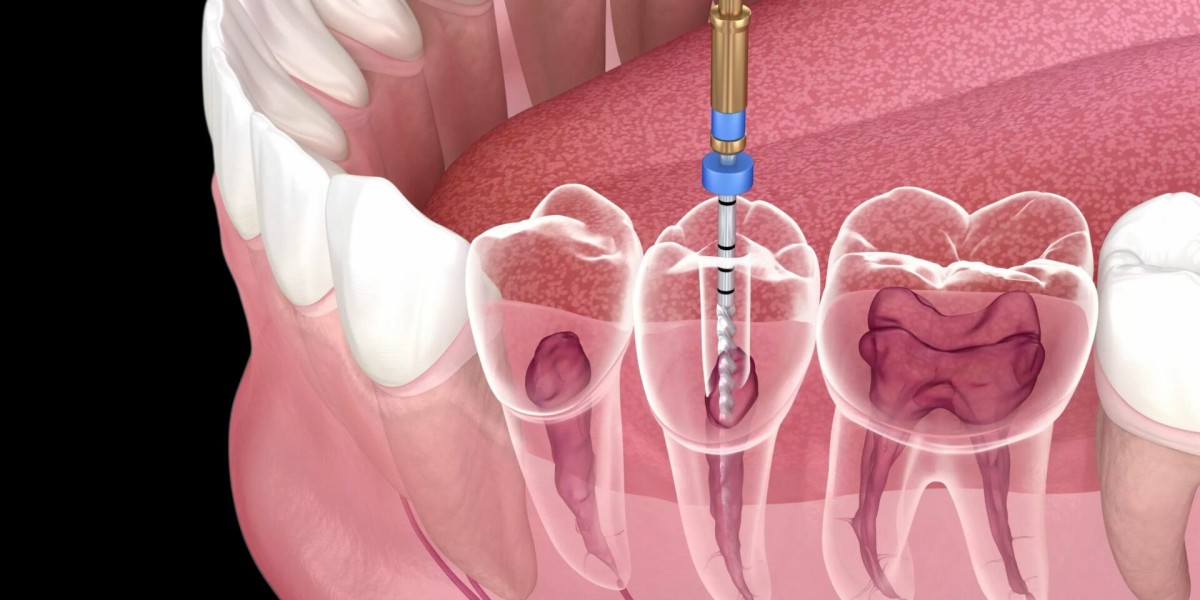A root canal treatment is a vital dental procedure that aims to save a tooth affected by infection or decay within its pulp. One of the most essential tools in ensuring a successful diagnosis and treatment is the dental X-ray. Before a dentist can begin a Root Canal Treatment in Islamabad, an accurate and detailed understanding of the tooth’s internal structure is necessary—and that’s where X-rays play a central role.
In this blog, we’ll explore how X-rays contribute to root canal diagnosis, why they are indispensable in treatment planning, and what patients in Islamabad can expect from this crucial diagnostic step.
Understanding the Importance of X-rays in Dentistry
Dental X-rays are imaging tools that help dentists visualize areas of the mouth not visible to the naked eye. These include:
The inner layers of the teeth
Bone structure supporting the teeth
Tooth roots and their alignment
Signs of infections, abscesses, or bone loss
In root canal cases, this imaging becomes crucial to determine the extent of infection or inflammation and to design a precise course of treatment.
How X-rays Help in Root Canal Diagnosis
X-rays assist at different stages of the root canal procedure, from diagnosis to post-treatment assessment. Here’s how they help:
1. Detecting the Source of Pain or Infection
Many patients report tooth pain, sensitivity, or swelling, but the cause isn't always visible during a visual exam. An X-ray allows the dentist to:
Spot deep cavities or decay extending into the pulp.
Identify periapical abscesses—pus-filled sacs at the tooth root.
Detect hidden fractures or trauma within the tooth.
Without an X-ray, these problems can go undiagnosed or misdiagnosed, leading to ineffective treatment.
2. Evaluating the Extent of Damage
X-rays provide clarity on the depth of infection. A tooth may look healthy on the outside, but the internal pulp could be severely infected. By examining an X-ray, a dentist can determine:
How far the infection has spread within the tooth and surrounding bone.
Whether a root canal is viable or if extraction might be necessary.
The number and shape of root canals that need cleaning and sealing.
In essence, the X-ray serves as a roadmap for the procedure.
3. Planning the Root Canal Treatment
The anatomy of each tooth is unique. Some teeth have more than one root canal, and these canals may curve or narrow in complex ways. X-rays help dentists:
Assess the length and curvature of the canals.
Identify any calcifications or obstructions within the canals.
Plan which tools and techniques to use for thorough cleaning and sealing.
Precise planning prevents complications and ensures the entire infected area is addressed.
4. Monitoring the Progress During Treatment
In some cases, multiple X-rays are taken during the root canal procedure to:
Verify that the dentist has reached the full length of the canal.
Ensure all infected pulp has been removed.
Confirm that the filling material has been placed accurately.
These mid-treatment X-rays are crucial for ensuring every step is completed successfully before the final restoration is placed.
5. Post-Treatment Evaluation
Once the root canal is completed, an X-ray helps to:
Confirm the root canals have been sealed effectively.
Check for any remaining infection or air pockets.
Establish a baseline for future comparison during follow-up visits.
By examining a post-operative X-ray, the dentist can determine the success of the procedure and recommend additional care if needed.
Types of X-rays Used in Root Canal Diagnosis
Several types of X-rays may be used during the diagnosis and treatment process:
Periapical X-rays
These are the most commonly used for root canal evaluations. They focus on one or two teeth at a time, providing a clear image of the entire tooth, from crown to root tip and surrounding bone.
Bitewing X-rays
These show the upper and lower teeth in one area of the mouth and are helpful in identifying decay between teeth. Though less common for root canals, they can support initial assessments.
Panoramic X-rays
This broad view of the entire jaw can help identify broader issues such as bone loss or multiple abscesses. It's useful in treatment planning, especially when multiple teeth are involved.
Digital Radiography
Many modern clinics in Islamabad now use digital X-rays, which:
Reduce radiation exposure.
Provide instant results.
Allow for image enhancement for better diagnostics.
Digital radiography enhances the speed, safety, and accuracy of root canal diagnosis.
Are X-rays Safe?
Yes, dental X-rays are generally considered safe. The amount of radiation exposure is minimal, especially with digital X-rays. Clinics often use protective aprons and collars to shield other parts of the body. In Islamabad, reputable dental practices follow international safety protocols, ensuring that patients are not exposed to unnecessary radiation.
However, if you’re pregnant or have specific health concerns, it’s important to inform your dentist beforehand so that appropriate precautions can be taken.
What to Expect During the X-ray Process
The X-ray process is quick and painless. Here’s what typically happens:
You will be asked to wear a protective lead apron.
The technician or dentist will place a small sensor or film inside your mouth.
The machine will take the image, which only takes a few seconds.
The dentist will review the image and explain the results to you.
You’ll likely need more than one X-ray during the diagnosis and treatment phases, but each one is a vital part of ensuring your dental health is restored effectively.
Conclusion
X-rays are not just a supporting tool but a cornerstone of effective root canal diagnosis and treatment. They enable dentists to detect problems that are invisible to the eye, map out complex root canal structures, and verify the success of treatment at every stage. If you’re experiencing dental discomfort or have been advised to undergo a root canal, trusting in a clinic that utilizes advanced X-ray technology is essential.
For those seeking professional and reliable care, Dynamic Clinic in Islamabad offers state-of-the-art diagnostic tools, experienced dental professionals, and patient-centric care to ensure your root canal procedure is safe, comfortable, and successful.









